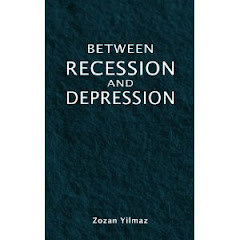WINNING STRATEGY: COST LEADERSHIP
Anyone who has somehow touched business studies will recall Michael Porter’s name. Porter -Harvard professor specialising in Management and Economics - describes three generic strategies of firms to gain competitive advantage as: cost leadership, differentiation and market segmentation or focus.
Differentiation has been an innovative and respectable way of entering to and staying in any market of which doing the business in a different way, challenging the available methods, thinking outside the box have been the main characteristics. However credit crunch is making it hard for differentiation to breath and pushing firms in most industries to be cost leader to increase their market share or in most cases to survive.
Swiss chocolate maker Lindt & Sprungli’s closure of 62.5 per cent of its 80 retail boutiques in US is the most recent example of this. Lindt has a self defined philosophy of premium quality chocolate with products or services of superior quality and value and a history, which goes back to 1879. Being established and good quality can not prevent customers from moving to cheaper brands.
Asda and Lidl’s increase in UK market share by the end of 2008 due to cheap products are other examples of success of the strategy in retail sector.
The problem with cost leadership is the squeezing profit margins, thanks to price sensitive buyers, which is a barrier to new entrants. However it will work well when there are economies of scale, learning effect, low costs for factors of production, technological developments.
If you can achieve these conditions adding minimum or best no debt in balance sheet, then you are likely to be a winner.
My nephew

My niece

My book

Search This Blog
Scribnia Ranking
Blog Archive
- May (2)
- March (1)
- February (1)
- January (21)
- December (27)
- November (13)
- October (2)
- August (10)
- July (5)
- June (4)
- May (2)
- April (6)
- March (5)
- February (4)
- January (10)
- November (2)
- September (6)
- August (4)
- July (2)
- June (10)
- May (2)
- March (1)
- January (1)
- December (1)
- November (1)
- September (1)
- August (1)
- May (1)
- April (1)
- March (3)
- February (2)
- January (4)
- December (10)
- November (2)
- October (1)
- September (1)
- June (1)
- April (5)
- March (3)